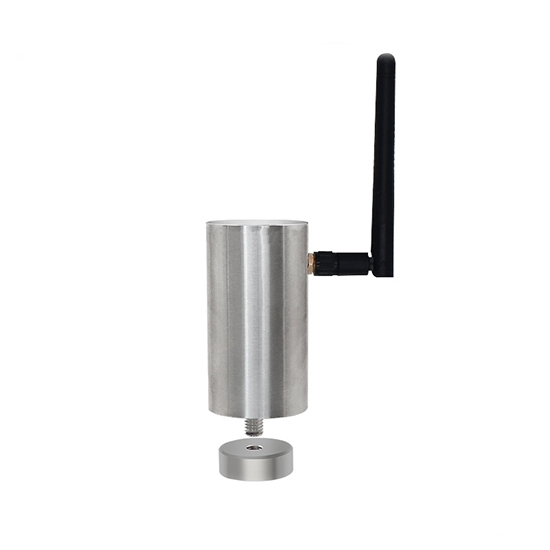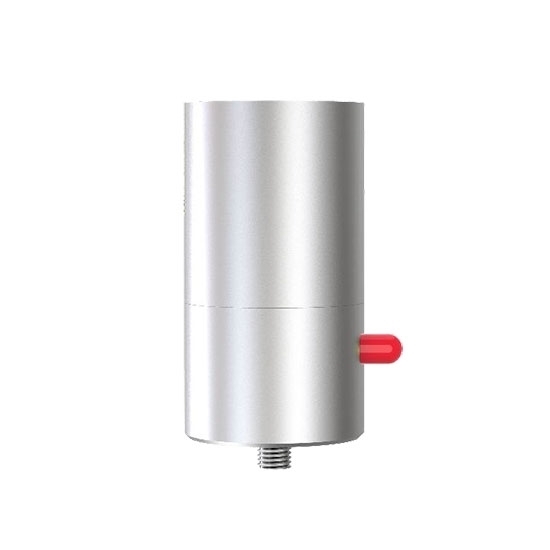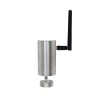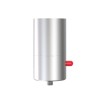



- Stock: In Stock
- Model: RDDLZ-VT-WNB
- Weight: 1.00
- SKU: RDDLZ-VT-WNB
Available Options
Industrial-grade 3-axis wireless vibration sensor with high precision and high reliability as the core, providing 3-axis vibration velocity monitoring, resolution up to 0.1mm/s, accurate and stable measurement. The vibration transmitter is compact and lightweight, combined with the built-in lithium battery power supply, convenient installation. Protection grade IP67, strong resistance to harsh environments. Supports application requirements from -40℃ to 150℃ temperature, especially suitable for key areas such as factory equipment monitoring and predictive maintenance.
Specification
| Model | RDDLZ-SN-3001-WZ3-NB |
| Signal Output | NB-IoT network upload |
| Installation | M8 Threaded/M5 Threaded/magnetic (optional) |
| Power Supply | Built-in battery power (3.6V docking lithium-ion battery) |
| Vibration Measurement Direction | 3 axis |
| Frequency Range | 10-1600 (Hz) |
| Protection Class | IP67 |
| Collector Section Working Environment | -40℃~+80℃, 0%RH~80%RH |
| Transmitter Contacts Withstand Temperature Range | -40°C~150°C (default 85°C) |
| Vibration Velocity Measurement Range | 0-50 (mm/s) |
| Vibration Velocity Measurement Accuracy | ±1.5% FS (@1kHz, 10mm/s) |
| Vibration Velocity Display Resolution | 0.1 (mm/s) |
| Surface Temperature Measurement Range | -40°C~85°C |
| Temperature Display Resolution | 0.1 (°C) |
| Housing Material | Aluminum |
| Configuration | Bluetooth configuration, neutral configuration software available |
| Endurance | Service life up to 3 years (1 hour between uploads) |
| Data Upload Interval | Minimum upload interval can be set to 2 minutes |
| Dimension | 105.5*φ42mm |
| Net Weight | ≤550g |
Dimensional Drawing (unit: mm)
Connection Methods
- Threaded Installation: Just “plug and screw”, can be installed, tight and reliable, do not worry about loosening.
- Magnetic Mounting: Just “one twist and one suck” can be put into use, even if the motor is strongly vibration, it will not be affected in the slightest.
Wiring Drawing
Overall Installation Precautions
The vibration sensor supports threaded installation, thread specifications M5*0.8*7, M8*1.25*10 and other conventional thread specifications, in addition to magnetic mounting (magnetic models for the M5*0.8*7 threaded models plus the magnetic seat) installation process, please pay attention to the following matters: 1.
- Attach the battery to the 2P female lead of the device (Figure 1) and tighten the top case.
- Install the antenna in the antenna socket on the outside of the device (Fig. 2).
- The NB temperature and vibration collector should be installed in as open a location as possible, and should not be installed inside a metal case.
- Record the area where the device is installed, the mounting site, and the device tag address. This information is convenient for software personnel to prepare monitoring software and equipment management personnel later maintenance use.
Applications
Tips: How do wireless vibration sensors enable data transmission?
Wireless vibration sensors typically transmit the collected data to a receiving device or cloud platform via a wireless communication protocol (e.g. Wi-Fi, Bluetooth, LoRa or NB-IoT). This approach avoids the limitations of traditional wired transmission and allows the sensors to be flexibly installed in a variety of locations. Users can view the data in real time via mobile or computer, or set up an alarm function to receive alerts when vibration is abnormal. In addition, some advanced sensors support edge computing, which allows data to be processed directly on the device side, reducing transmission delays.
